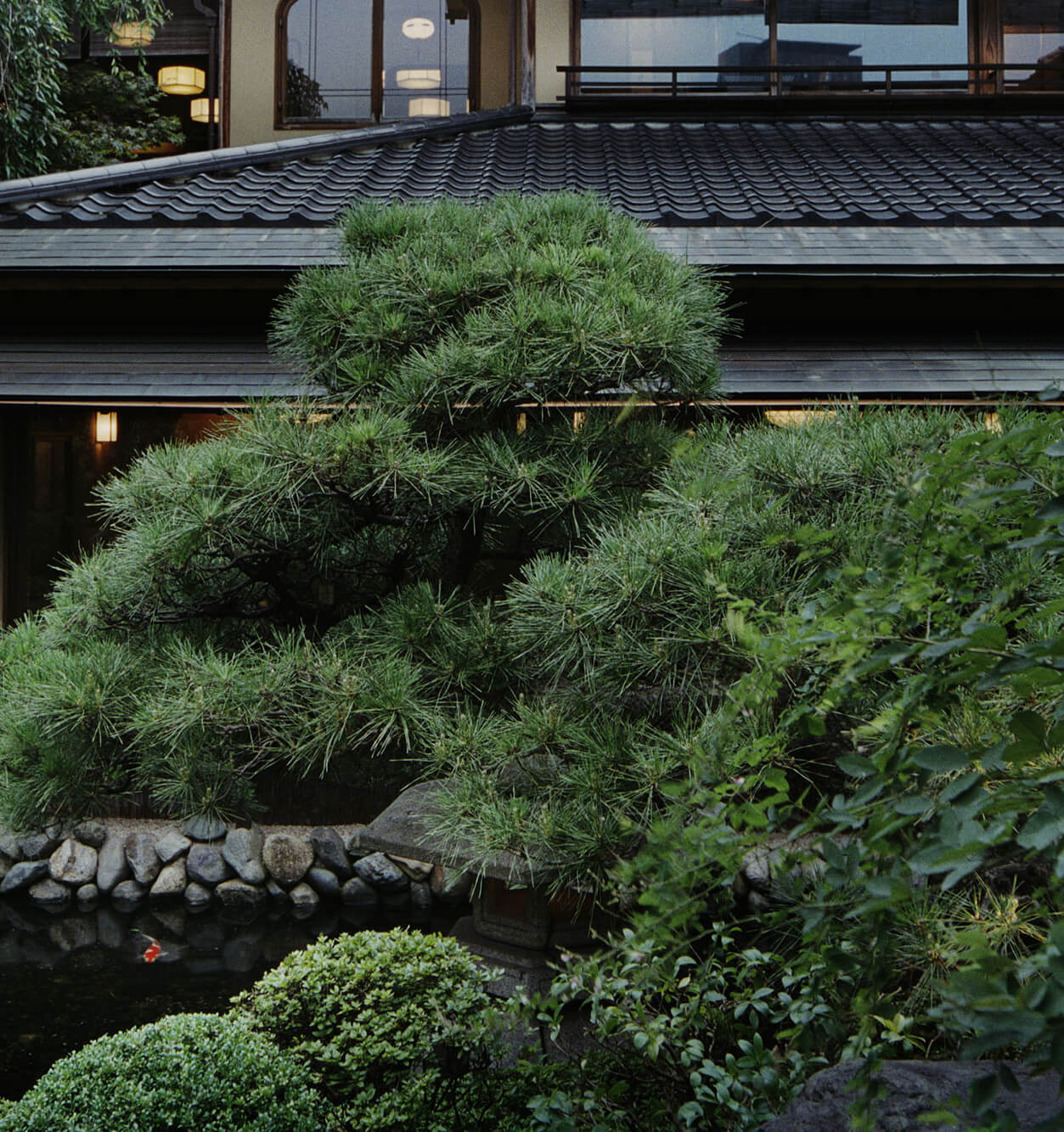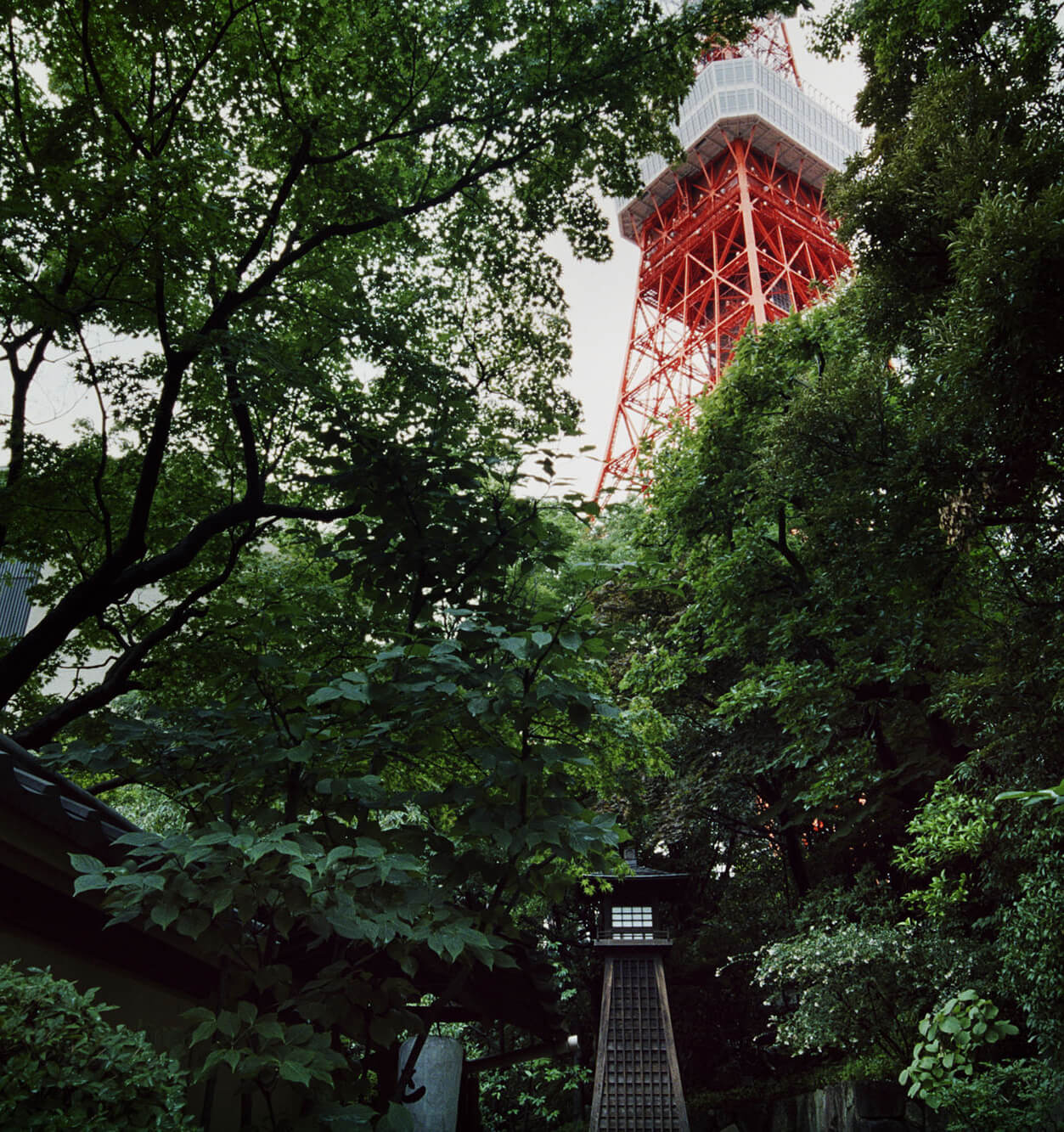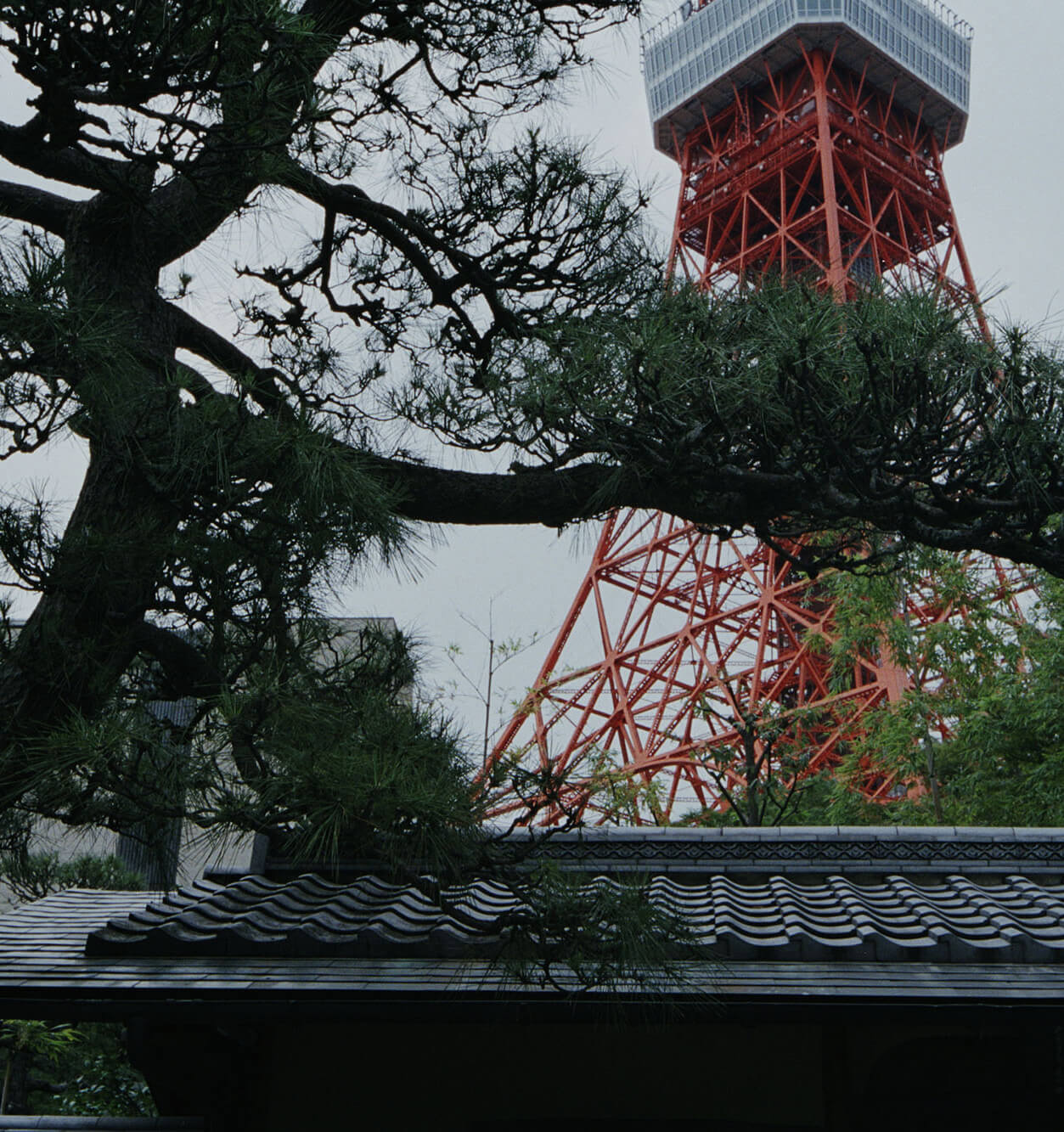DUO’S JOURNEY
Tokyo Tokyo Shiba Tofuya Ukai
Located at the base of Tokyo Tower in the heart of the city is the tofu kaiseki cuisine restaurant in Shiba, Tokyo. With its immaculate Japanese garden, the site is nigh fantastical. Diners are treated to unique views of the garden from each of the restaurant’s private rooms while enjoying their exquisite meal.
When did you go to Tokyo Shiba Tofuya Ukai?
Yamaguchi:
I went to Tofuya Ukai after visiting the urban gardens Koishikawa Korakuen and Hama-rikyu. I was mostly focusing on scenic gardens and other gardens of historical significance, but when I tried to think of places in Tokyo where a garden includes modern architecture as its shakkei, I thought of Tofuya Ukai. I’d been there a time or two for personal reasons, so I remembered the restaurant had a garden with Tokyo Tower in the backdrop. That’s why I went there with Mr. Kumon.
The garden is immaculately well kept by the restaurant, which serves tofu kaiseki cuisine. It’s fairly new, only about 16 years old since opening in 2005. I heard from the company’s former president, Mr. Daikuhara that the garden was built from scratch in what used to be a bowling alley and that the bedrock made excavation a challenging task. Buildings large and small at the base of Tokyo Tower, rooms made unique by their particular view of the garden, and a garden maintained with exceeding care—they make for a truly magnificent space.
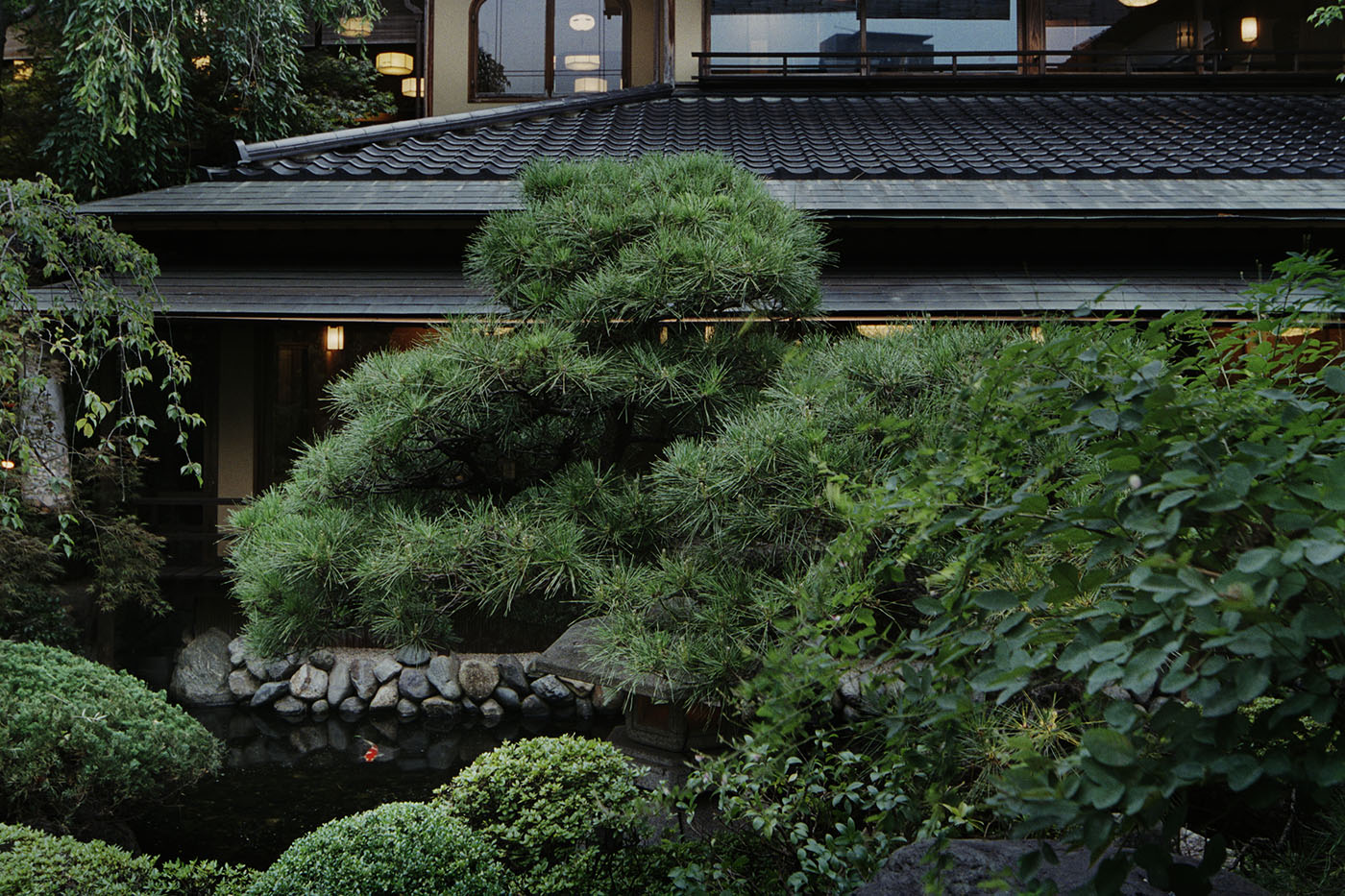
So this was in the early stages of the photoshoot, which was before you were thinking about neighboring textures, wasn't it?
Yamaguchi: Yes. I had this strong impression there was a garden with Tokyo Tower as its shakkei, and I wanted to nail that first. But in reality, there were many combinations of materials that could be called “neighboring textures.” The garden is part of a restaurant, which is on a smaller scale than the first two gardens we shot (Koishikawa Korakuen and Hama-rikyu). I think that’s actually how the materials make themselves so distinct. This aspect of the garden contributed to my going there with Mr. Kumon for the shoot, but at that point, I was more focused on shakkei.
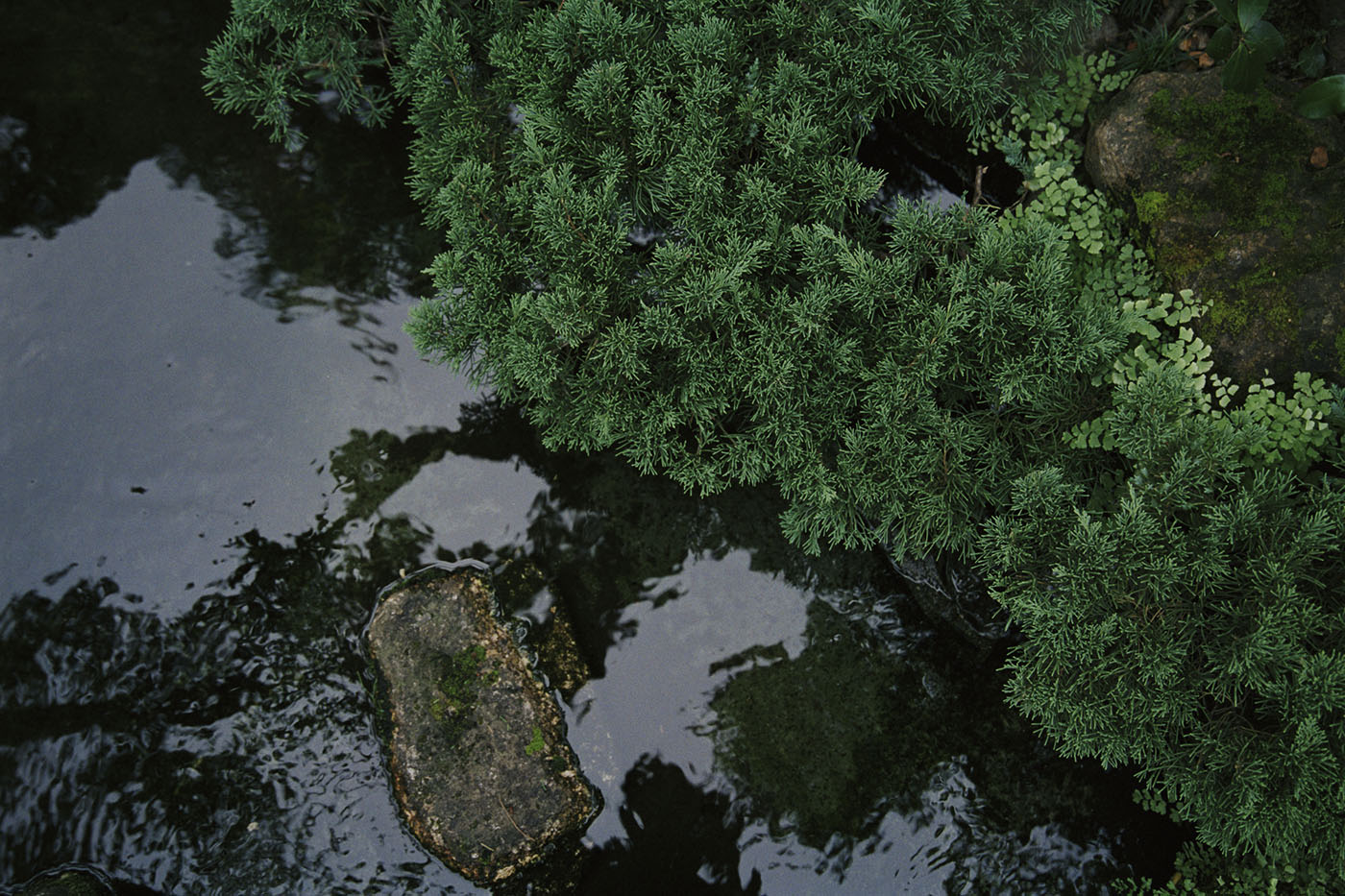
Kumon:
I went there after hearing Tokyo Tower was in the garden’s shakkei, but from a photography standpoint, it was a difficult shoot. Tokyo Tower was too close to the foreground. Whenever I tried to capture the whole tower, the perspective forced my eye to be drawn to the top of the tower rather than the garden. Compared to other gardens, this one compacts a lot of elements into it, and I was more interested in it. It was nice to see so much depth created in such a small world.
Views of the garden from each of the buildings where diners enjoy their meals are carefully controlled. So, I captured these little scenes I found to be particularly intriguing from these angles in addition to capturing Tokyo Tower in shakkei. It’s interesting how we can see the symbolic red and white colors through the gaps in the woods of Tokyo and how we could also find similar shapes in the lanterns at the bottom of the frame.
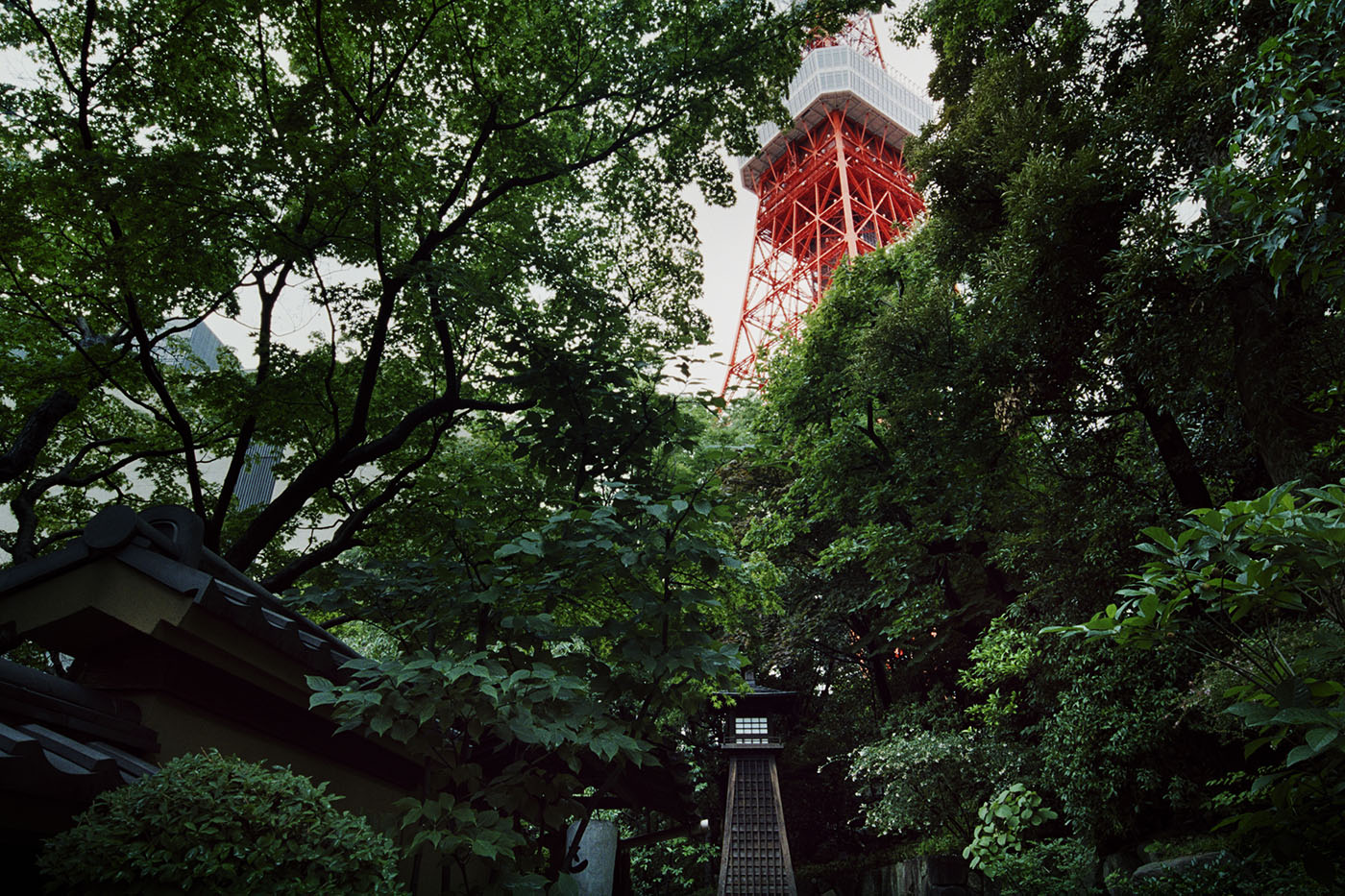
You mentioned the garden is new, but what about the architecture? Did they originate at another garden?
Yamaguchi:
One of the buildings is a 200-year-old sake brewery moved there from Yonezawa, Yamagata prefecture. The other buildings are also made from old materials. The restaurant Ukai Toriyama has a spectacular environment in the mountain trails of Okutakao; one of their buildings was relocated too—a private residence moved from Toyama. Ukai Toriyama’s garden is located in the mountains, so it’s less like the mountains are shakkei and more that it’s like a remote village buried deep in nature.
What’s noteworthy is the lack of noise and unbelievable comprehensiveness of the garden. What I mean by noise is, for example, when you go to a ryotei (Japanese restaurant) in Kyoto, you’ll see unnecessary equipment in the garden or sprinklers sorely out of place on the ceilings of older Japanese buildings. I can’t help but be distracted by those. Both of the Ukai restaurants have gone to great lengths to keep them as inconspicuous as possible.
During our photoshoot early in the morning at Tofuya Ukai, we saw about 15 people tending to every fallen leaf and weed, every single day. That’s how they keep the space so immaculate. That something so meticulous gets done daily at the bottom of Tokyo Tower is a marvel in itself.
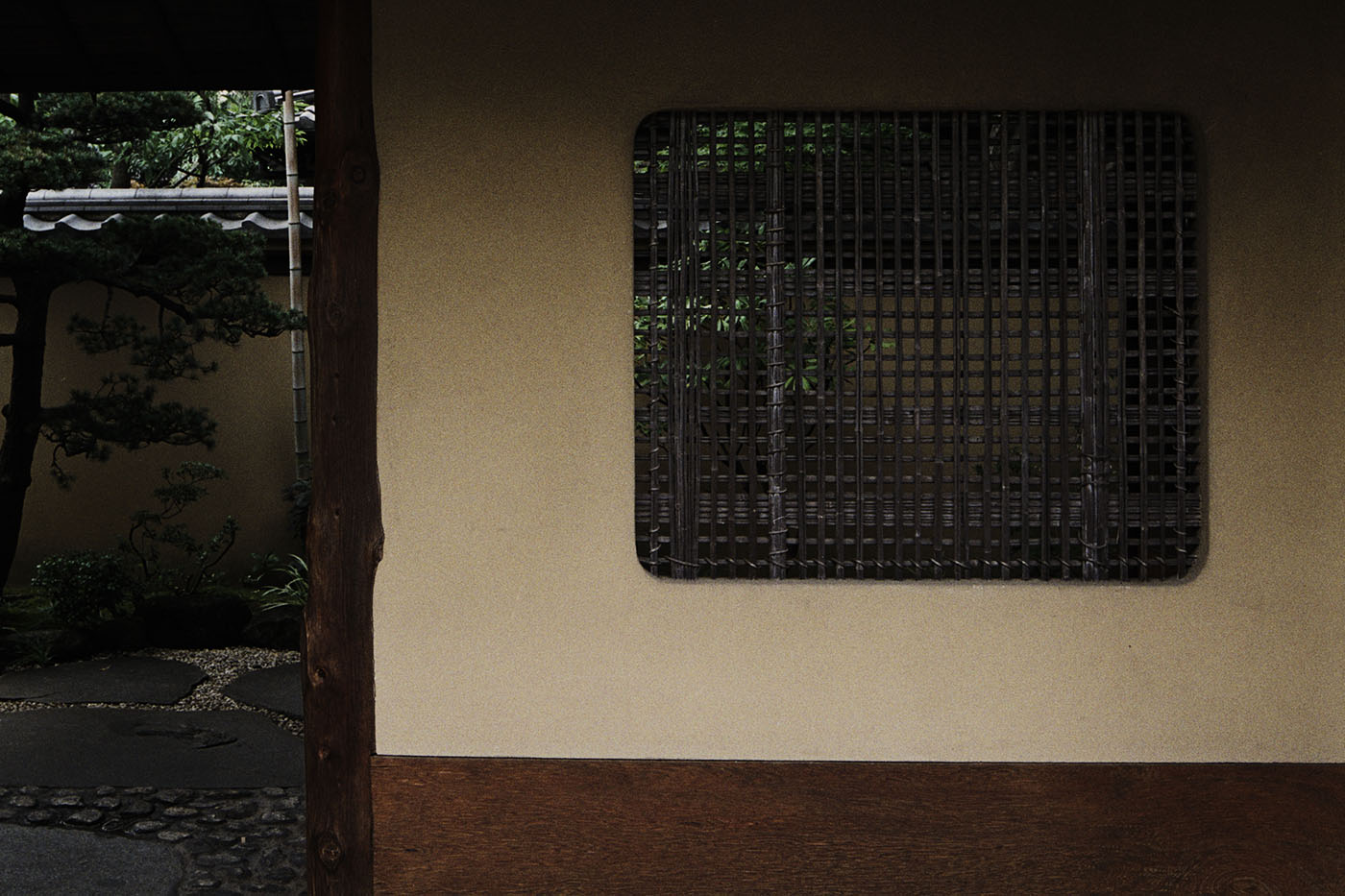
Tokyo Tower is such a huge structure for shakkei, and I wonder if it affected you differently than what you saw in the photos of Korakuen and the Dome. You mentioned Hyakkaen and the Tokyo Skytree didn’t work out so well. What was different?
Yamaguchi:
Tokyo Tower is tall and massive, but from its steel frame (now considered thin), you can get a basic idea of the tower’s scale. Kind of like how seeing one clay roof tile gives you a sense of how big a roof is. Meanwhile, the Tokyo Dome you see from Korakuen provides no such clue. The strange sense of the scale of this white, abstract, ambiguous mass left an impression on me and that’s what made it unique as shakkei.
We went to Hyakkaen after visiting Tofuya Ukai. The Skytree’s steel frame is far beyond the physical scale of our daily lives. So it seems, like the Tokyo Dome, it would lack a discernible sense of scale. But I think it’s designed too thoroughly to be a shakkei. Tokyo Tower is just a bunch of steel frameworks, but maybe that’s why it works as a shakkei.
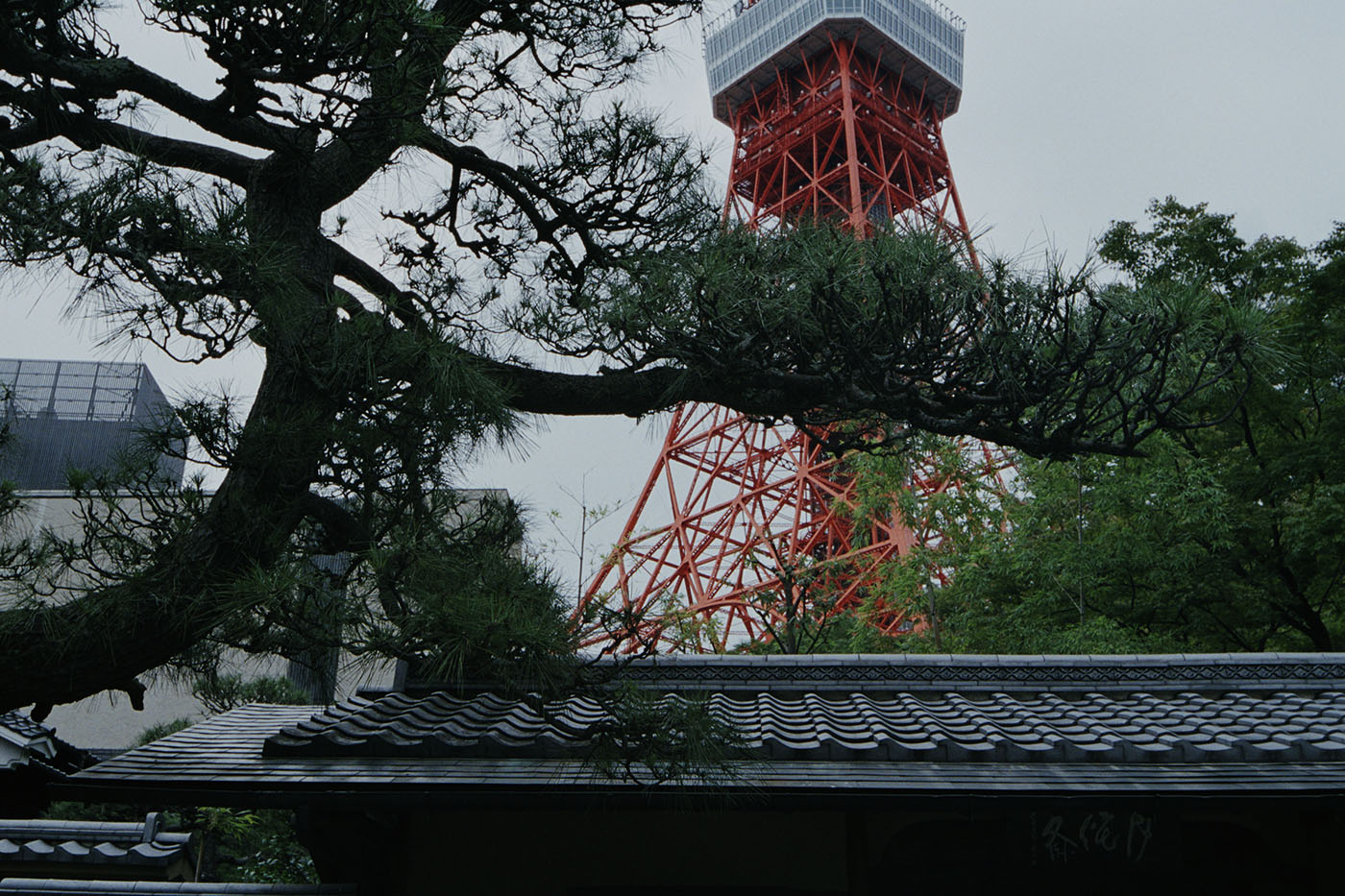
October 27, 2021
